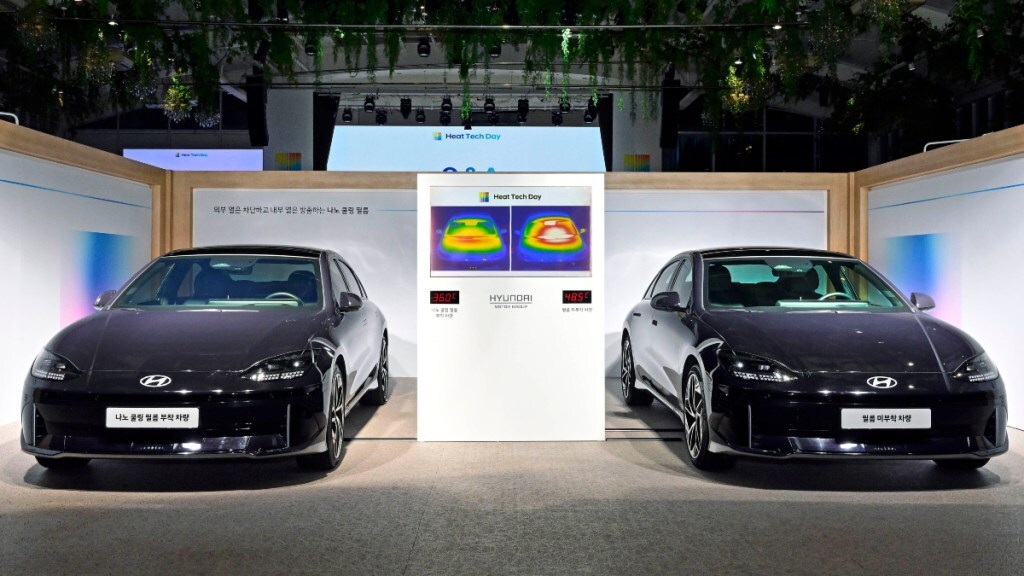Hyundai Motor Group, including Hyundai and Kia brand of cars, has introduced a new innovation in temperature control technology which has been designed to enhance passenger comfort and energy efficiency in vehicles.
During the recent ‘Heat Tech Day’ event held in Seoul, South Korea, the two South Korean automotive brands unveiled three groundbreaking temperature control technologies. The three technologies unveiled are: Nano Cooling Film, Radiant Heating System, and Metal-Coated Heated Glass.
Nano cooling film: Reduces temperature by up to 12°C
First introduced in July last year, the nano cooling film can reduce the temperature of the cabin by up to 12-degree celsius compared to ambient temperature without further impacting light transmission. This advanced technology takes window tinting to the next level by not only blocking incoming infrared radiation from outside the vehicle, but also enabling heat to escape from within.
Its innovative three-layer structure consists of two layers that effectively reflect solar energy and a third layer that emits mid-infrared wavelengths, providing superior thermal management and comfort. During testing of this technology, vehicles with regular glass and not equipped with Nano Cooling Film recorded an interior temperature of 48.5°C, compared with 36.0°C for the vehicles fitted with Nano Cooling Film.
Radiant Heating System: Instant heater
This technology is especially useful for European countries which experience severe cold during winters every year. Designed to quickly warm passengers, the Radiant Heating System uses a heating element that emits radiant heat towards passengers’ legs, quickly warming them during cold weather.
The Radiant Heating System, designed to work in conjunction with the vehicle’s existing heating system, has the potential to conserve up to 17% more energy while reaching the desired temperature, thereby saving time and enhancing passenger comfort. This innovative system rapidly delivers warmth to the lower body within just three minutes.
By reducing the energy required for climate control, the Radiant Heating System is expected to significantly extend the driving range of electric vehicles in winter conditions. The system features a high-temperature film-type heating element, capable of reaching 110°C, wrapped in a fabric material that emits infra-red rays and adjusts heat to a comfortable level. Additionally, a built-in burn prevention system detects body contact and instantly lowers the temperature, ensuring improved safety by eliminating the risk of burns.
Metal-Coated Heated Glass: Frost, Moisture removal
The groundbreaking Metal-Coated Heated Glass system revolutionises winter driving by rapidly clearing frost and moisture from vehicle windshields, providing enhanced visibility and safety compared to traditional tungsten wire heating elements. Unlike conventional systems, Metal-Coated Heated Glass is invisible, offering an unobstructed and distortion-free view for occupants.
It uses an advanced 48V system that can defrost the entire glass surface in just five minutes at -18°C, achieving up to four times faster results while consuming approximately 10% less energy than conventional air-conditioning systems. Moreover, during hot weather, the metal coating passively blocks at least 60% of solar energy, reducing the need for cabin cooling and significantly improving energy efficiency.
Hyundai Motor and Kia have filed patents for Metal-Coated Heated Glass in key markets worldwide, with plans to integrate this innovative technology into future vehicles.
